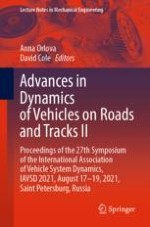2022 | OriginalPaper | Chapter
What is the Right Way to Model Traction Power Distribution in Complex Heavy Haul Locomotive Models?
Authors : Maksym Spiryagin, Peter Wolfs, Qing Wu, Colin Cole, Tim McSweeney
Published in: Advances in Dynamics of Vehicles on Roads and Tracks II
Publisher: Springer International Publishing
Activate our intelligent search to find suitable subject content or patents.
Select sections of text to find matching patents with Artificial Intelligence. powered by
Select sections of text to find additional relevant content using AI-assisted search. powered by
